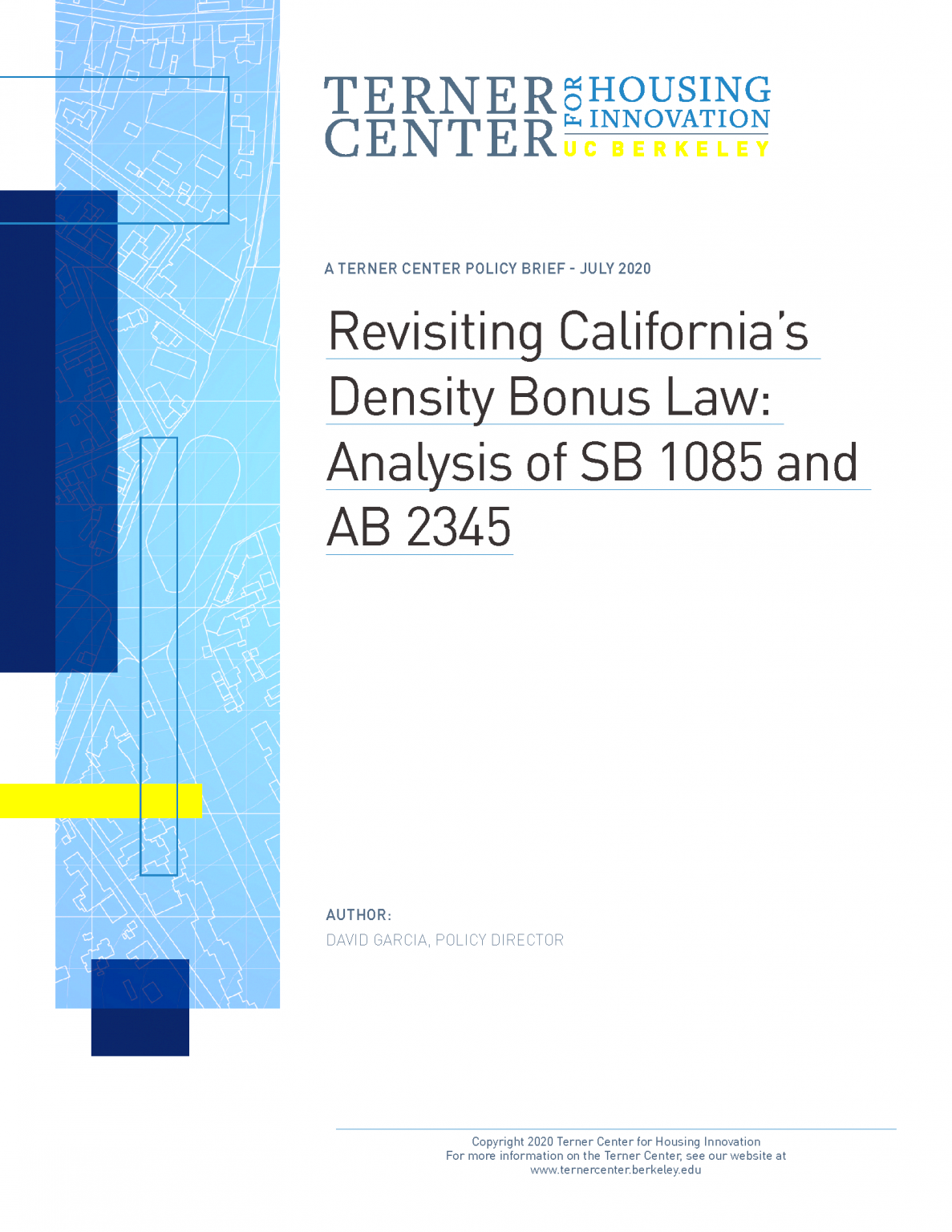California Density Bonus Law in 2024 and Housing Development Opportunities
The California Density Bonus Law was established to address housing shortages and promote affordable housing development. By allowing developers to build more units than typically permitted under local zoning laws, this law aims to encourage the construction of affordable housing. As California faces an ongoing housing crisis, understanding this law is crucial for developers and community members alike. In 2024, the law continues to play a vital role in shaping housing development opportunities across the state.
Key Provisions of the Density Bonus Law

The Density Bonus Law includes several important provisions designed to facilitate housing development. Here are the key points:
- Increased Density: Developers can obtain a density bonus of up to 35%, allowing them to build more units than zoning laws typically allow.
- Affordable Housing Requirement: To qualify for the density bonus, a certain percentage of the units must be affordable for low or moderate-income families.
- Additional Incentives: Developers can receive additional incentives, such as reduced parking requirements or streamlined permitting processes, based on the percentage of affordable units.
- Location Flexibility: The law encourages development in areas with access to public transportation, jobs, and services, making housing more accessible.
These provisions aim to balance the need for increased housing supply while ensuring that some units remain affordable for those who need them most.
Eligibility Criteria for Developers

Developers looking to take advantage of the Density Bonus Law must meet specific eligibility criteria. Here are the main requirements:
- Project Size: The project must consist of at least five residential units to qualify for a density bonus.
- Affordability Levels: A minimum percentage of units must be designated as affordable. This varies based on the desired density bonus:
- 5% of units for very low-income housing.
- 10% of units for low-income housing.
- 20% of units for moderate-income housing.
- Compliance with Local Laws: The project must comply with local zoning and planning regulations, even while seeking a density bonus.
- Application Submission: Developers must submit a density bonus application with supporting documentation, including details on affordable units and project plans.
By meeting these criteria, developers can enhance their projects while contributing to California’s efforts to expand affordable housing.
Benefits of Utilizing Density Bonuses

Utilizing density bonuses can provide significant advantages for developers and the communities they serve. By allowing for increased density, these bonuses create a win-win situation. Here are some key benefits:
- Increased Profitability: More units mean higher potential revenue. Developers can maximize their investment by building additional homes, which can lead to improved profit margins.
- Meeting Housing Demand: With California’s housing shortage, density bonuses help developers contribute to meeting the growing demand for housing. More units can lead to more options for residents.
- Streamlined Approvals: Many local governments provide expedited permitting processes for projects utilizing density bonuses, reducing the time it takes to get approvals.
- Community Benefits: Density bonuses often include requirements for affordable housing, which helps meet community needs and promotes diversity in neighborhoods.
In summary, density bonuses can make projects more feasible and beneficial for both developers and the communities they serve, making it a strategic choice for those looking to invest in housing development.
Impact on Housing Development in California
The impact of density bonuses on housing development in California has been significant. As the state grapples with a severe housing crisis, these laws play a crucial role in shaping the landscape. Here are some of the key impacts:
- Boosting Housing Supply: Density bonuses encourage the construction of more housing units, directly addressing the supply-demand imbalance in many areas.
- Affordable Housing Creation: By incentivizing the inclusion of affordable units, density bonuses contribute to a more diverse and inclusive housing market.
- Urban Revitalization: These bonuses promote development in underutilized areas, leading to the revitalization of neighborhoods and increased property values.
- Increased Access to Amenities: More housing units often lead to a denser population, which can support local businesses and enhance public services.
In conclusion, the Density Bonus Law has become a vital tool for addressing California’s housing challenges, promoting sustainable growth and community development.
Challenges and Considerations for Developers
While utilizing density bonuses can be beneficial, developers also face several challenges and considerations. It’s important to be aware of these factors when planning a project:
- Regulatory Complexity: Navigating local zoning laws and understanding the specifics of the Density Bonus Law can be complicated, requiring thorough research and legal advice.
- Community Resistance: Increased density can lead to opposition from existing residents who may be concerned about changes in neighborhood character or traffic congestion.
- Financial Feasibility: While more units can mean more revenue, the costs associated with construction and providing affordable units can impact profitability.
- Market Conditions: The housing market can be unpredictable. Developers must assess whether the demand for new housing aligns with their plans to utilize density bonuses.
By addressing these challenges head-on, developers can make informed decisions and strategically leverage density bonuses to maximize their impact on housing development.
Recent Changes in the 2024 Law
In 2024, significant updates to the California Density Bonus Law were implemented to further enhance housing development opportunities and address ongoing housing challenges. These changes aim to streamline the process and make it more beneficial for both developers and communities. Here’s a look at some of the key updates:
- Increased Density Bonuses: The maximum density bonus has been raised from 35% to 50% for projects that include a higher percentage of affordable units. This change encourages developers to offer more affordable housing options.
- Expanded Eligibility: More types of housing projects are now eligible for density bonuses, including mixed-use developments and certain types of adaptive reuse projects, broadening opportunities for various developers.
- Streamlined Application Process: The application process has been simplified, reducing paperwork and allowing for quicker approvals, which helps developers get projects off the ground faster.
- Local Incentives: Local jurisdictions are now encouraged to provide additional incentives, such as fee waivers or tax reductions, for projects utilizing density bonuses, making these projects even more attractive.
These changes are designed to foster a more dynamic housing market, making it easier for developers to contribute to the solutions needed in California’s housing crisis.
Future of Housing Development Opportunities
The future of housing development in California looks promising, especially with the enhancements made to the Density Bonus Law. As the state continues to grapple with a housing shortage, here’s what we can expect moving forward:
- Increased Collaboration: Developers, local governments, and community organizations are likely to collaborate more closely to identify housing needs and create effective solutions.
- Innovation in Housing Design: Expect to see more innovative and sustainable housing designs that maximize space while integrating green technologies and materials.
- Focus on Affordability: With the expanded incentives for affordable housing, developers will increasingly focus on creating units that cater to low and moderate-income families.
- Enhanced Infrastructure: As new housing projects emerge, local governments will need to invest in infrastructure improvements, such as public transportation and community services, to support growing populations.
Overall, the future holds exciting possibilities for housing development, paving the way for a more accessible and diverse housing landscape in California.
Frequently Asked Questions
Here are some common questions regarding the California Density Bonus Law and housing development:
- What is a density bonus? A density bonus allows developers to build more units than local zoning laws typically allow, in exchange for including affordable housing in their projects.
- Who is eligible for a density bonus? Developers of residential projects with at least five units can qualify for a density bonus, provided they meet specific criteria related to affordability.
- How much of a density bonus can I receive? Developers can receive up to a 50% density bonus if they meet the requirements for a higher percentage of affordable units.
- Are there any risks associated with using density bonuses? Yes, challenges can include community opposition, regulatory complexities, and financial feasibility concerns.
- How can I apply for a density bonus? Developers must submit an application with supporting documentation to the local planning department, detailing the proposed project and affordability levels.
These FAQs provide insight into the Density Bonus Law, helping developers and community members understand its significance in addressing California’s housing needs.
Conclusion
In conclusion, the California Density Bonus Law is a critical tool in addressing the state’s housing crisis. With recent updates in 2024, the law offers enhanced opportunities for developers to contribute to the growing demand for affordable housing. By allowing for increased density and providing various incentives, this law not only supports developers in maximizing their projects but also benefits communities by promoting diversity and accessibility in housing. As we look to the future, ongoing collaboration between developers, local governments, and communities will be essential to ensure that these opportunities are realized effectively. Embracing these changes can lead to a more sustainable and inclusive housing landscape across California.


